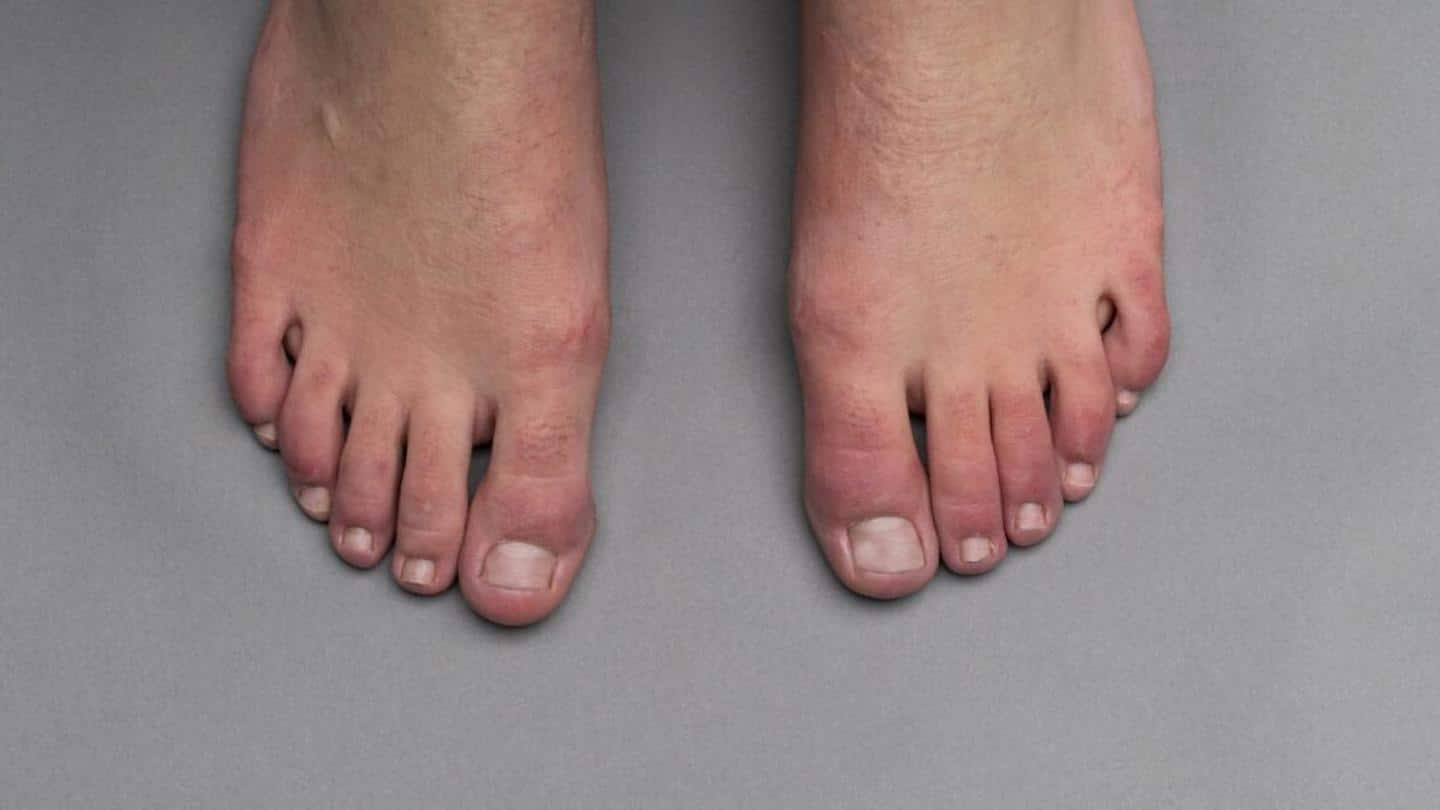
COVID toes: Causes, symptoms, and everything you should know
What's the story
COVID-19 has impacted almost everyone in different ways.
While many patients reported an increase in respiratory ailments post-recovery, others were subjected to the more deadly black fungus infection.
Another side effect that has been the rise is COVID toes where ulcers or necrosis is seen on the tip of the toes.
While the condition by itself is not dangerous, it can lead to discomfort.
Symptoms
COVID toes can develop on the fingers and toes
COVID toes begin with a bright red coloration on the fingers or toes, which gradually turns purple.
It can either affect just one toe/finger or all the toes/fingers.
One might also experience an itching sensation in that part, but usually, there is no pain.
However, there can be discomfort in some cases that can become severe, making the patient unable to wear their shoes.
Causes
What causes COVID toes in the first place?
COVID toes are relatively new and research is underway to understand why it occurs.
Observations so far suggest that the condition may be the outcome of antiviral immune response by the body while fighting the coronavirus.
However, another study suggests that COVID toes aren't just linked to the novel coronavirus and that walking barefoot and lack of physical movement can also be the causes.
Susceptibility
Who all are more susceptible to this condition?
Scientists are yet to analyze the proportion of people with COVID-19 who can get COVID toes.
However, one study observed that the majority of patients who reported COVID toes were children and young adults.
It was also reported that people with lower BMIs are more prone to the condition.
However, research is still underway and hence it is too soon to make conclusions.
Treatment
There is no specific treatment for this so far
COVID toes are not considered harmful and the condition usually fades away on its own.
There is no specific treatment available to cure the condition and symptomatic treatment is the way to go.
However, if this fails to give the patient relief or if the condition worsens forming lumps, blisters, or pus on the infected area, contact a medical professional at the earliest.